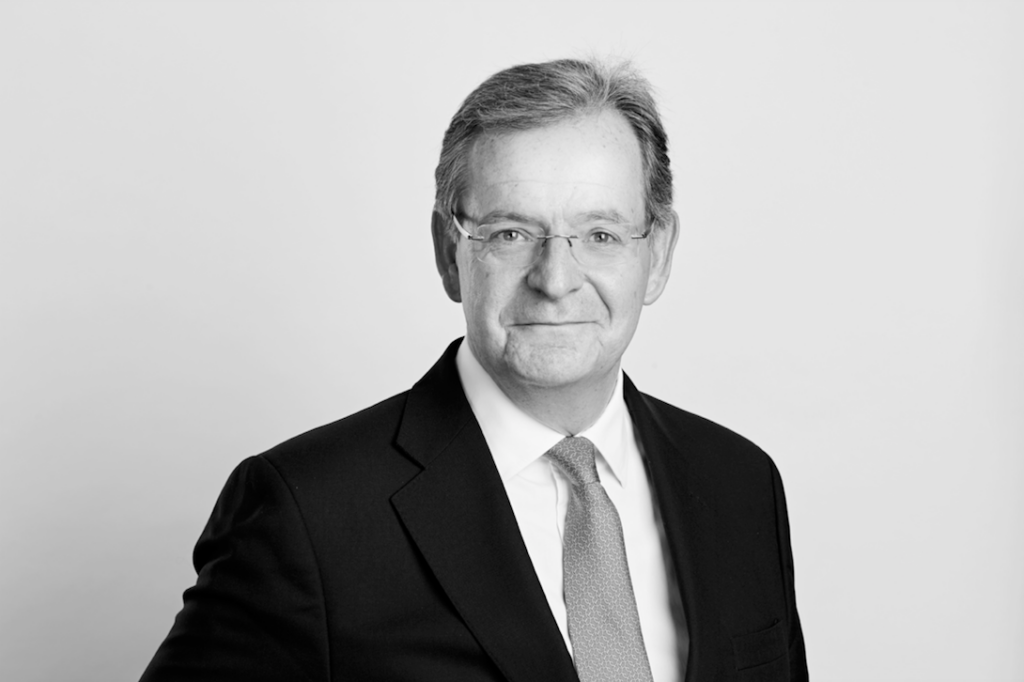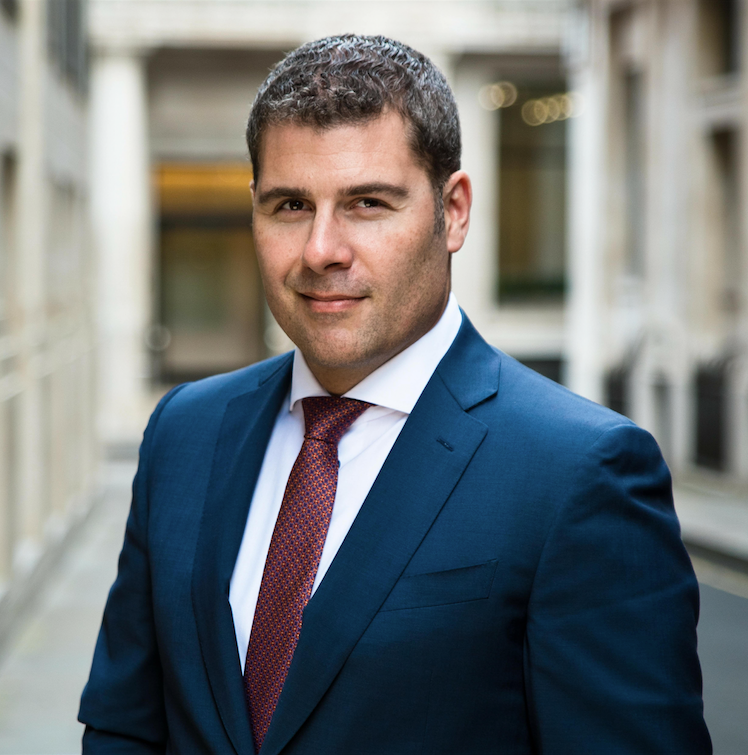
PBI looks at the year ahead and asks, what will be the biggest changes to private banks and their clients? The first in our Private Banking Predictions 2019 looks at opinions on markets and investments in 2019
James Fleming, CEO of Sandaire
Liquidity should be viewed as an option to buy assets at distressed prices

“2019 will bring higher volatility across asset prices, presenting opportunities for capital not bound by redemptions or benchmarks.
“The prior ten years saw significant global monetary stimulus of unprecedented size and synchronicity.
“Over the course of 2018, global monetary stimulus is retracting and not in a coordinated fashion. Moreover, geo-political events are causing less synchronised growth across economies and raising greater idiosyncratic risks. Finally, the dampening of volatility provided by central banks has been removed.
“Structurally, the depth of market liquidity is a fraction of what it was pre-2008. This means that it takes longer and moves prices further to (buy) sell an asset than in the past. This fact is more relevant today in some asset classes, like high yield bonds or leveraged loans, which have doubled in size. Additionally, the significant growth in passive index products and systematic trading strategies may prove pro-cyclical to market moves – meaning that their reaction function may accentuate market trends.
How well do you really know your competitors?
Access the most comprehensive Company Profiles on the market, powered by GlobalData. Save hours of research. Gain competitive edge.

Thank you!
Your download email will arrive shortly
Not ready to buy yet? Download a free sample
We are confident about the unique quality of our Company Profiles. However, we want you to make the most beneficial decision for your business, so we offer a free sample that you can download by submitting the below form
By GlobalData“We would expect more frequent and more violent ‘air pockets’ in asset prices, as markets adjust to flows in an environment of tighter monetary policy. We believe that the rise in volatility and desynchronised economies will result in greater re-allocation of assets by large investors – resulting in a larger inventory of trades going through a now very small door of broker dealers.
“This should be viewed as an opportunity by UHNW families.
“Liquidity is important to address unexpected spending. However, liquidity should also be viewed as the option to buy assets at distressed prices. We believe the value of this option will prove very attractive over 2019.
“Capital without constraints will be able to step into a true buyers’ market to buy temporarily unwanted (but not broken) assets at steep discounts from sellers driven by rule-based constraints on liquidity or portfolio composition. It is also important to maintain a shopping list of desired assets – or work with an advisor who manages such a list and mindset.”
John Goldie, FX strategist at Argentex
Parity in sight for GBP/USD
“Budgeting for 2019, a period punctuated so early by the Article 50 deadline, is clearly incredibly difficult. Many banks are forecasting sterling to appreciate in the next 6-12 months. Clearly banks’ base case outcome is for a workable deal to be achieved and some of the biggest institutions have suggested there is only a 30% chance for a ‘no deal’ outcome, but concede that if that did happen, sterling would likely depreciate by approximately 10%. The Bank of England took it a step further recently in suggesting that the damage could be as much as 25% for the pound – setting parity in its sights for GBP/USD, a level never seen before for the pair.
“Clearly, by the time this publication goes to print, we will be two months from the March-end deadline for negotiations. Therefore, investors and companies should be careful of being overly swayed by a Bank’s market view or opinion which could easily be obsolete before the end of the first quarter of the new year.
“Indeed, up until recently especially, it feels like there was an inherent assumption in the market that the outcome is rather binary – yet clearly, in politics, this is rarely the case. The legal wrangling, and the parliamentary debates, will likely verify this in the coming days and weeks, but even working to the assumption that the deal – in its current format, or amended – is agreed and ratified, we should be wary of assuming that GBP/USD will necessarily trend significantly higher in the coming year.
“Sterling’s recovery in 2017 coincided with the dollars biggest annual loss since 2003. A recovery back up towards 1.50 and higher for GBP/USD, mooted by some well-respected commentators to be seen before then end of 2019, perhaps ignores the fact that it is heavily reliant on the prospect of a weakening dollar as well. With the pace of rate hikes in the US likely to slow in the year ahead it has become the fashionable view that the dollar will weaken dramatically in that period. Even when there appears to be an overwhelming consensus – and often because of this – the FX markets have a surprisingly regular habit of bucking that expectation and doing the opposite. Therefore, assuming that the move in the coming 12 months will adhere to a linear, upward, direction of travel will be a dangerous presumption to take.”
Ed Raymond, head of portfolio management at Julius Baer
Expect the Federal Reserve to normalise monetary policy
“As we enter 2019 the world seems a very different place from a year ago, when we had synchronised global growth and extreme levels of market optimism. Now US / China trade wars, political uncertainty in Europe, quantitative tightening, slowing global growth momentum and heightened volatility have dampened the spirit of investors.
“Ironically and following the recent bout of price/earnings compression, I believe that this provides a better base for global equity markets to continue their ascent as we enter the latter stages of the decade long bull market. Markets climb walls of worry and with a plethora of risk factors raising the equity risk premium of global markets, we believe that equities will offer better value than fixed income in 2019 as these risks abate, albeit with higher levels of volatility than we have seen in recent years.
“We expect the Federal Reserve to continue to normalise monetary policy throughout the course of 2019 against the backdrop of robust US economic growth and rising inflationary pressures, albeit the pace may slow from what is currently being indicated.
“This does not bode well for fixed income assets, where we prefer inflation-linked bonds to conventional Treasuries and hard-currency Emerging Market Debt over US High Yield, where there is an increasing concern coming from companies with low interest cover.
“With the traditional negative correlation between equity markets and government bonds breaking down of late, we have also increased our exposure to liquid alternative investments as a source of uncorrelated returns and an important diversifier within portfolios.”
Jeffrey Sacks, EMEA head of investment strategy at Citi Private Bank
Increasing human longevity is raising spending on healthcare
“We expect 2019 to be a more challenging year for global markets. That said, there are likely to be decent opportunities on a selective basis. So we are advising our clients to safeguard assets with more defensive portfolios, while still staying exposed to risk assets.
“We estimate around 7% total return in USD for global equities and 1% for global fixed income. Global growth is likely to moderate in 2019 but stay above 3%, and this is likely to be reflected in global EPS growth slowing from 16% to 8%. We expect the US dollar to remain range-bound below its 2017 peak, with likely downside pressure growing later in the year.
“Within equities the stronger relative performance is expected outside the US. Asian equities are preferred while Europe-ex UK equities should offer selective opportunities on a tactical basis. Fixed income offers potential for making our cash work much harder, especially at the short end of the US yield curve. In addition floating rate notes benefit from rising rates, and emerging market debt especially in Latin America offers decent yields relative to reasonable macro backdrops.
“In addition we are recommending ideas within three ‘unstoppable trends’. Firstly, getting exposure to Asia’s long-term development, increasingly driven by consumption, and not yet reflected in benchmark indices. Secondly, increasing human longevity is raising spending on healthcare. Along with the impact of technology in this sector, we are finding equity opportunities that should perform well even as rates rise and as credit risks increase. Finally, we are focused on disruptive digital technologies in areas like robotics and artificial intelligence.
Odi Lahav CEO of MJ Hudson Allenbridge
Crunch time for passive investing

“We believe the market has reached crunch time for passive investing, one of our investment themes for 2018 and the next few years. As the markets look poised to shift into the next part of the cycle, having seen strong gains in their equity exposures over the greater part of a decade, investors will become wary of the risks of being overly passive in their investment approach.
“Market conditions have been extremely advantageous for passive investing, but these are now changing. A combination of factors – the Fed’s interest rate rises, the return of volatility, the rotations now happening in the bond markets, QE slowing or stopping, and the sheer size of the passives market – means that it’s unlikely to remain a one-directional bet, and we are entering market conditions which now favour active management and disciplined risk management. Moreover, these conditions, should they persist, favour many alternative investment strategies.
“The popularity of passives will slowly fade in 2019 as investors find the market volatility uncomfortable and look to manage their risk exposures.”
RBC Wealth Management
Infrastructure investment offers the greatest near-term opportunity
“In our judgment, this very long economic expansion in the major economies has further to run. But evidence mounts that we are in the later stages of the cycle. A moderate slowing in economic momentum, rising trade tensions, and a more complex political backdrop in many countries have made the investment skies cloudier.
“While we are clearly in the late cycle, reliable leading indicators do not yet point to the risk of an imminent downturn, and 2019 global economic growth should still surpass that of the post-financial crisis average. We think this suggests earnings and share values have room to advance.
“But 2019 equity returns could be modest and delivered unevenly. We believe it is appropriate to trim overall equity exposure to a Market Weight or benchmark level in global portfolios from a slight overweight level.
“The late cycle is also the time to address the de-risking of fixed income portfolios. Reducing exposure to credit risk is a good place to start because compensation for taking those risks is currently minimal and credit quality has weakened.
“Infrastructure investment offers the greatest near-term opportunity, in our opinion. The global demand for new, refurbished, and replacement infrastructure assets is immense—particularly in the world’s two largest economies (the U.S. and China)—and the private sector appears destined to play a greater role than ever before.
The next in this series – on philanthropy – will appear on Monday 7th








